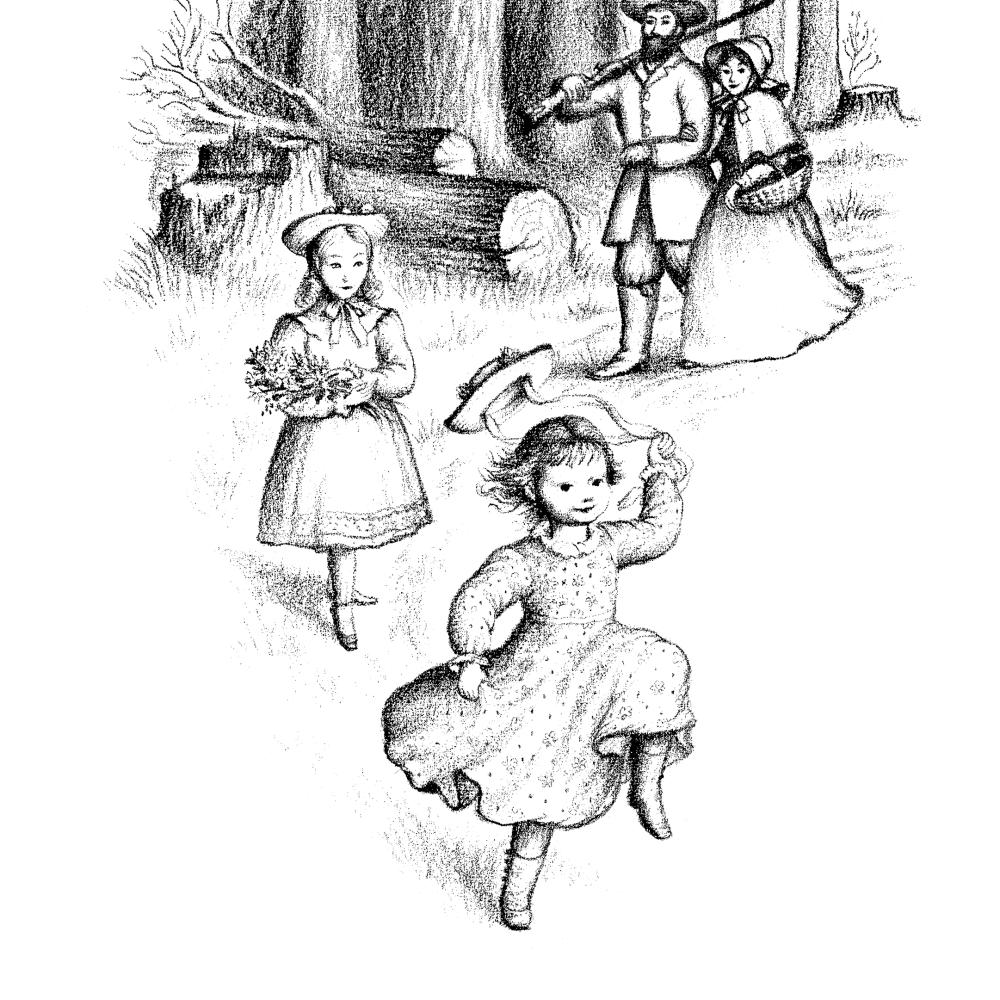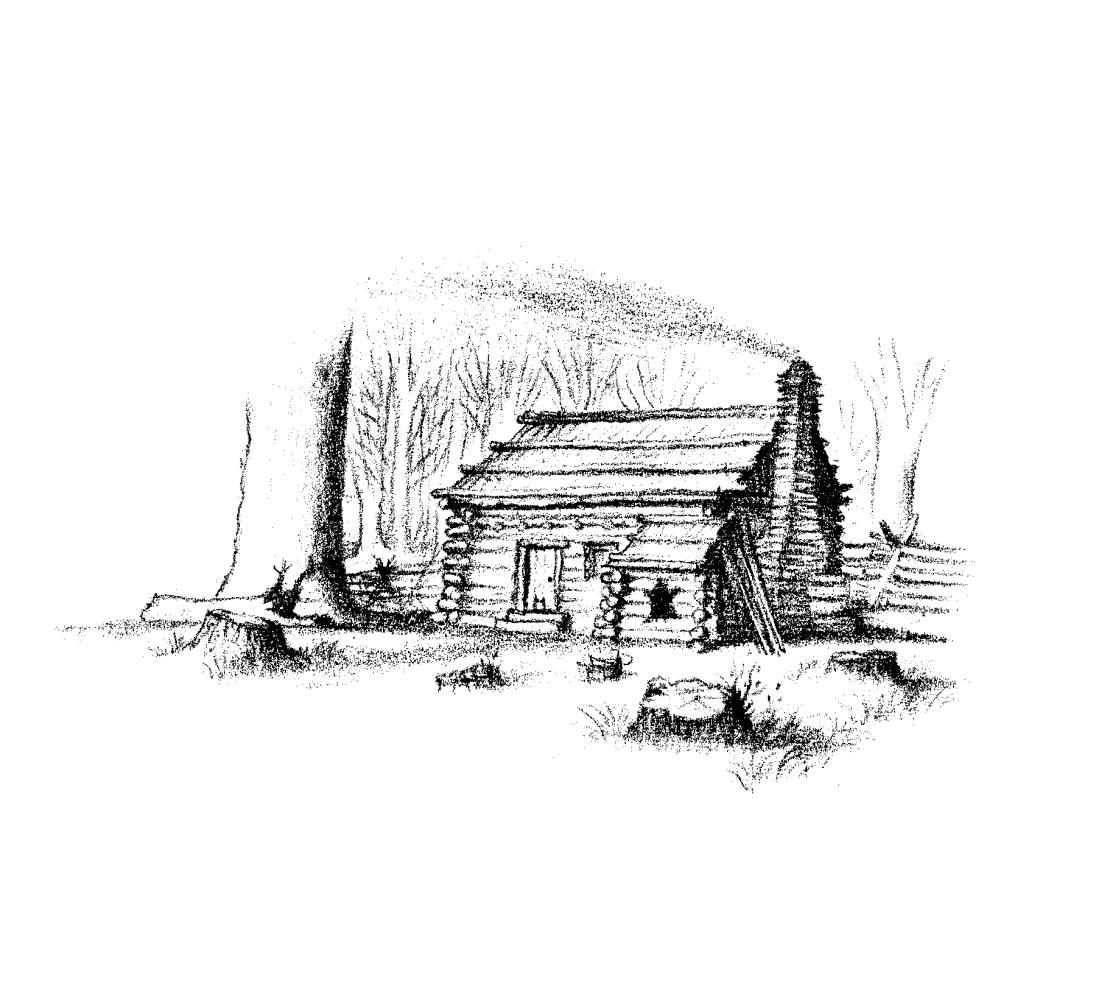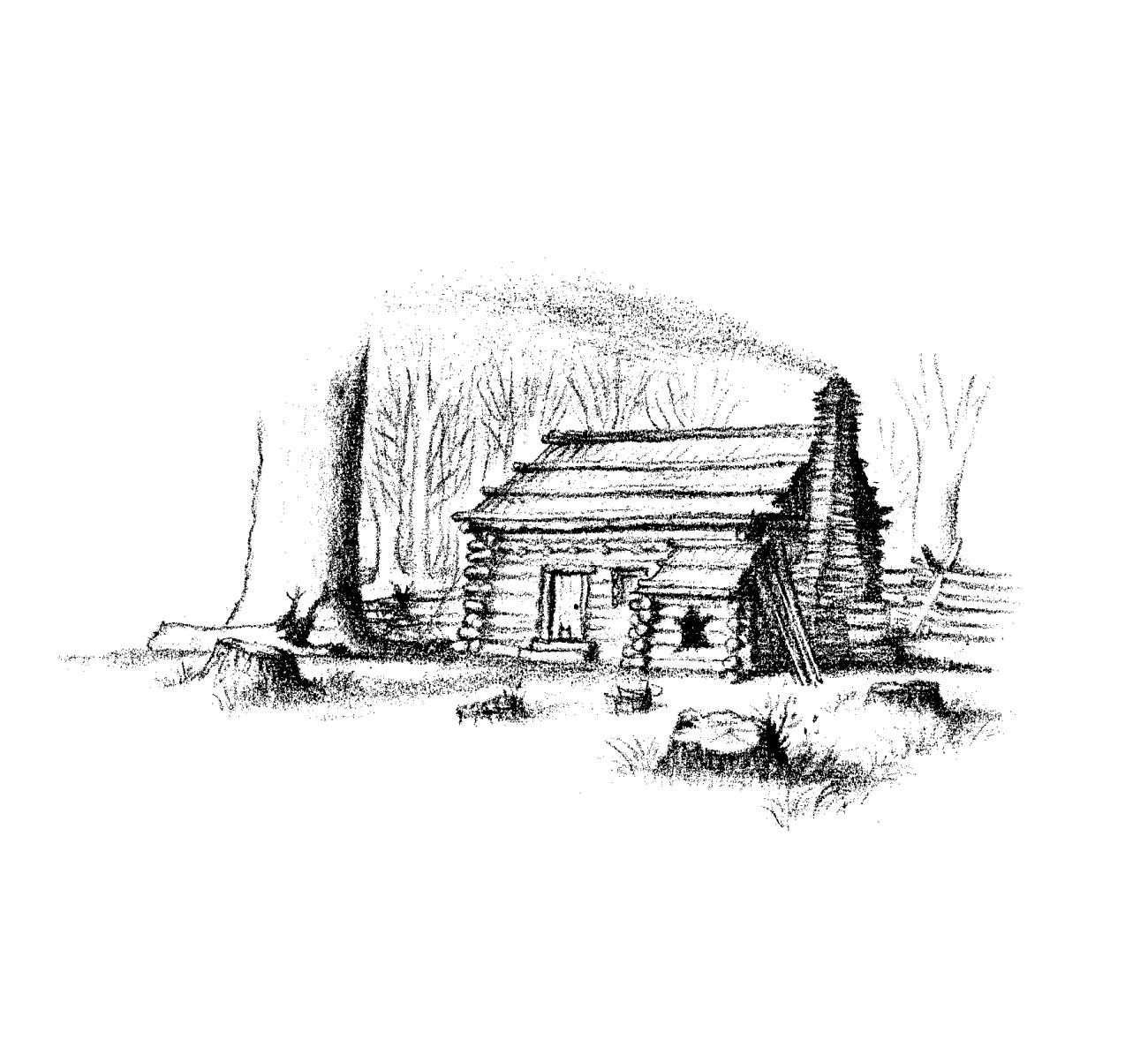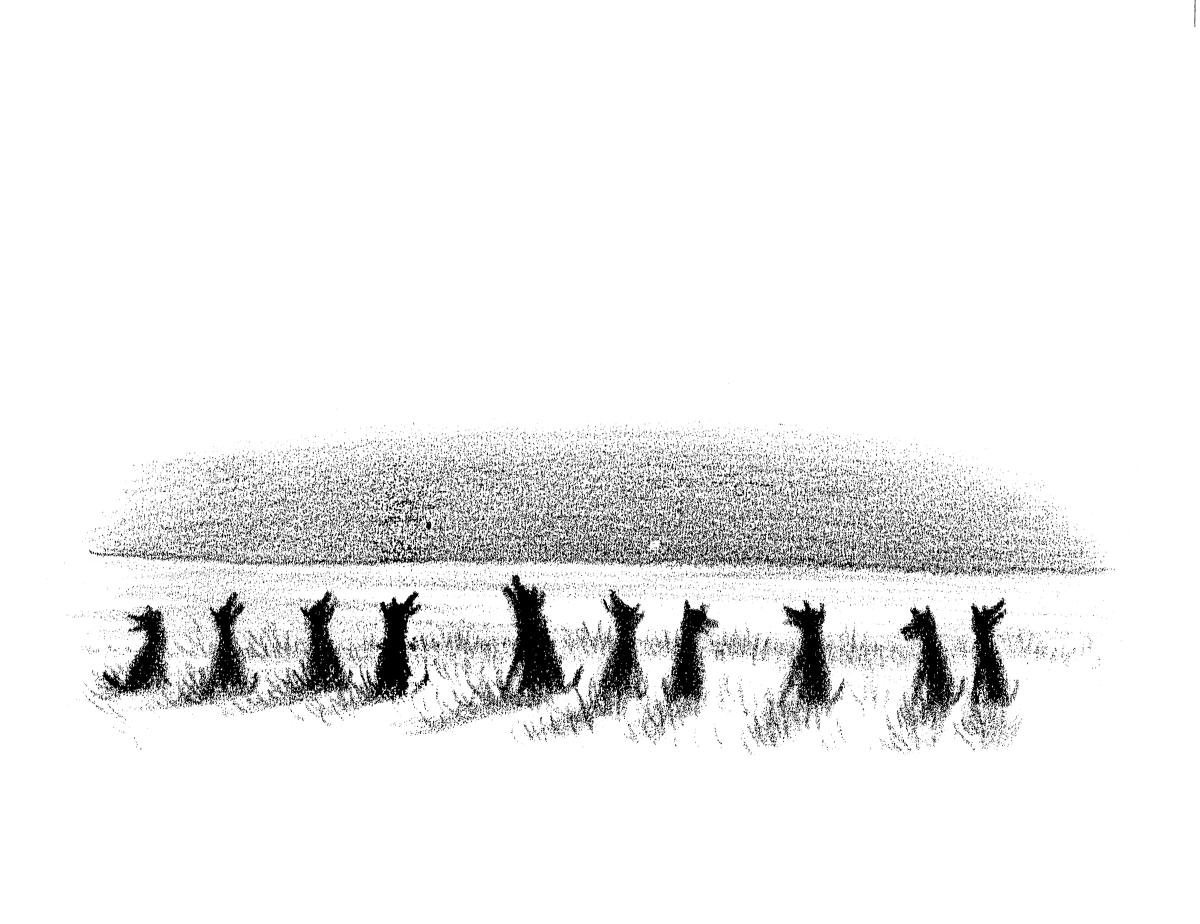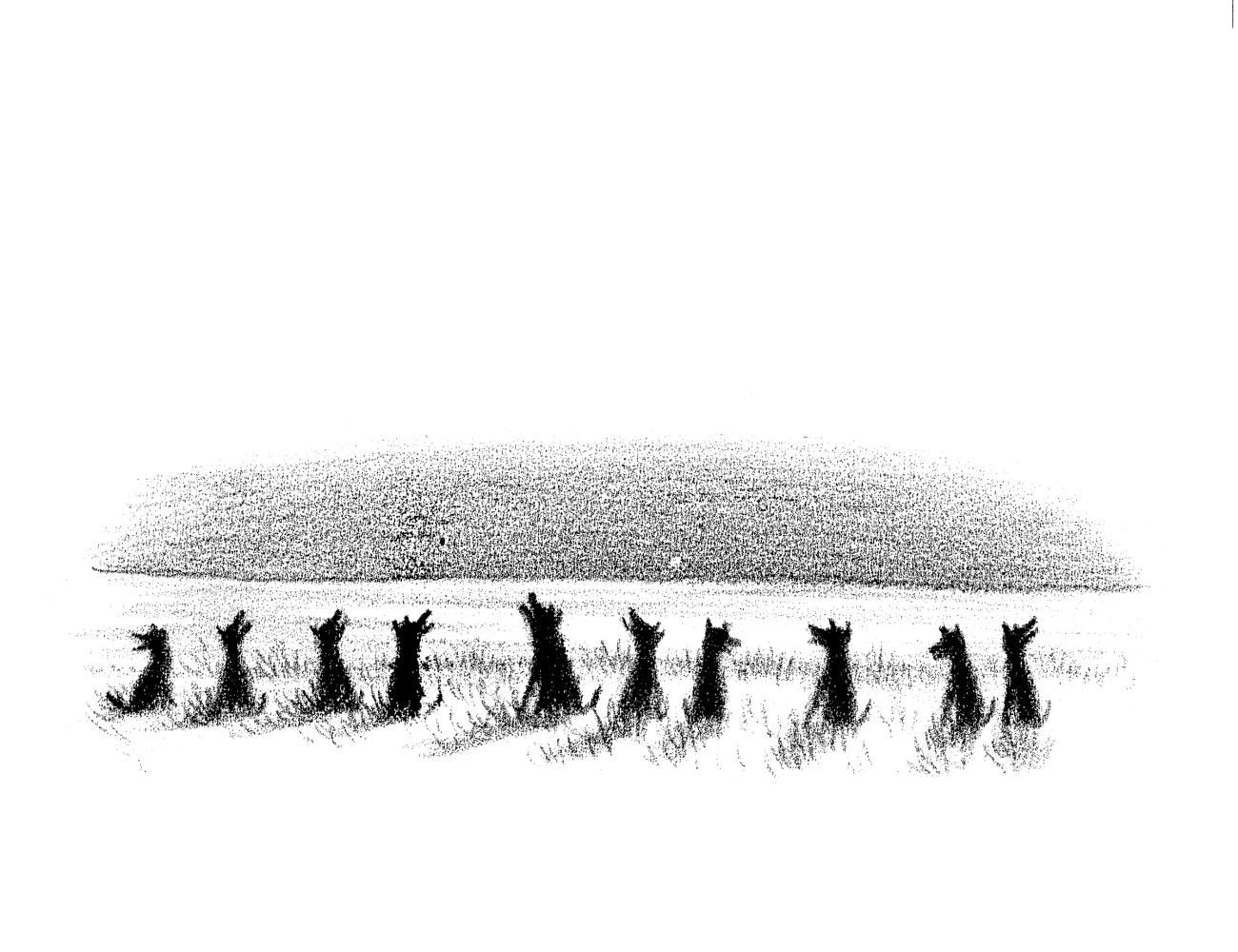She thought to herself, “This is now."
She was glad that the cosy house, and Pa and Ma and
the firelight and the music, were now. They could not be
forgotten, she thought, because now is now. It can never
be a long time ago.
—Little House in the Big Woods by Laura Ingalls Wilder
Those are the last words in the first book by Laura Ingalls Wilder, who was sixty-five years old when it was first published. Wilder wrote about her childhood for readers who were still enjoying theirs, many of whom developed a great fondness for her characters and their pioneer world. I was one such reader.
I remember as an eight-year-old incessantly playing “Little House on the Prairie.” My mother had lovingly sewn for me an ensemble of calico dress and bonnet, bloomers, and an apron, which my daughter now wears for dress-up. I was never Laura, though. I was always Carrie, and my friend Meredith Wilch was always Laura. We would sometimes visit Abbe Creek, a restored one-room schoolhouse in my little hometown in Iowa, and spend the afternoon there, pretending it was the nineteenth century. There were a whole slew of us Wilder girls. It was nearly a cult after the 1971 paperback boxed edition of Wilder’s books was published, which then ballooned once the television series produced by Michael Landon came along in 1974.
Over sixty million copies of the Little House books were sold between 1932 and 2010. Last year the Library of America released a new two-volume edition of Wilder’s nine books—Little House in the Big Woods, Farmer Boy, Little House on the Prairie, On the Banks of Plum Creek, By the Shores of Silver Lake, The Long Winter, Little Town on the Prairie, These Happy Golden Years, and The First Four Years. The Library of America volumes do not include the iconic drawings that Garth Williams produced for the 1953 edition, but they do contain a letter and speeches by Wilder, a chronology, and extensive notes on the text.
“It was an interesting exercise to publish the books without the illustrations. When you read them as an adult and you are divorced from that apparatus, you tend to see them more as text and less a children’s book,” says Caroline Fraser, editor of the LOA volumes. “Darker aspects of the material come forth.” Quite true. As I reread the novels myself, I found myself identifying not so much with Laura as with Ma and Pa, while taking greater notice of the more forbidding touches just beyond the awareness of the children.
Born near Pepin, Wisconsin, in 1867, Laura Ingalls Wilder spent most of her childhood on the move—to Indian Territory in Oklahoma, to the prairies of Minnesota and Iowa, and finally to De Smet, South Dakota, she and her family always trudging onward in the hope of something better. Seven of the Little House books chronicle these years, often spent in isolated places with only her immediate family, encountering disasters of biblical proportions. It was a childhood of marked deprivation in which Laura and her sisters might each receive a penny and a piece of candy for Christmas, where wolves prowled and howled outside their windows, miles of prairie ignited in flames, and clouds of
locusts darkened the sky and descended to eat the earth bare. Despite the trail of adversity the Ingalls faced, the books—especially the early ones—offer the sense of a happy busy childhood where the troubles and worries of adults are absent.
Of course, there was some self-censorship. Wilder never included the family’s stay in Iowa, where her only brother died in infancy, where Laura and her sisters were hired out for domestic work at a local hotel, and where Pa Ingalls woke them in the middle of the night to leave town and their debts behind. She also left out the story of the mysterious Benders who ran a remote inn in Kansas with a perpetually plowed back forty that hid the graves of murdered guests. And there was the family of neighbor children who froze during a blizzard in Minnesota, which Wilder wrote about in her early unpublished memoir, “Pioneer Girl,” but did not put into the Little House books. “Sister Mary and I knew of these things but someway were shielded from the full terror of them,” Wilder told an audience in Detroit in 1937. “Although we knew them true they seemed unreal to us for Ma was always there serene and quiet and Pa with his fiddle and his songs.”
The most comforting books are the first two that Wilder wrote, published during the heart of the Great Depression. After failing at farming in the Dakotas in the 1890s—drought, illness, and fire contributing—Laura moved with her husband, Almanzo, and young daughter, Rose, to the Ozarks in Missouri. Decades later, Wilder, who had been writing columns and editing for a regional farm newspaper, was encouraged by Rose, a published author whose last name was Lane, to write a memoir of growing up on the frontier for national serialization—mostly for financial reasons. Lane had pressured her parents to invest in the stock market in 1928, only to have the bottom drop out soon after. While the manuscript was rejected by notables such as The Atlantic and The Saturday Evening Post, Lane secretly revised it, renamed it, and sent it off to a friend who passed it on to the children’s department of Knopf. They took it and offered a three-book contract. But the Depression was taking its toll on the publishing industry; Knopf closed its children’s shop before publication. Through Lane’s connections, the manuscript found its way into the hands of Harper & Brother’s Virginia Kirkus (founder of Kirkus Reviews), who became so immersed while reading it on the train home to Connecticut that she missed her stop. “The real magic was in the telling,” Kirkus wrote.
In April 1932, Harper published what it titled Little House in the Big Woods, which became the month’s selection for the Junior Literary Guild. At the same time, Wilder delivered to Harper her second book, about Almanzo’s childhood in upstate New York, called Farmer Boy. There were obvious contrasts: Laura’s family had few material possessions (Laura’s older sister, Mary, has a doll, but Laura at first has only a corncob masquerading as a doll). Almanzo’s world was abundant. There were luxuries like an eternally filled doughnut jar, which Almanzo helped himself to without hesitation. Almanzo even got his own horse to raise, break, and sell. Nearly every other page details the feasts of meals the family enjoyed. A typical dinner at the Wilder house: “Almanzo ate the sweet, mellow baked beans. He ate the bit of salt pork that melted like cream in his mouth. He ate mealy boiled potatoes, with brown ham-gravy. He ate the ham, he bit deep into velvety bread spread with sleek butter, and he ate the crisp golden crust. He demolished a tall heap of pale mashed turnips, and a hill of stewed yellow pumpkin. Then he sighed, and tucked his napkin deeper into the neckband of his red waist. And he ate plum preserves, and strawberry jam, and grape jelly, and spiced watermelon-rind pickles. He felt very comfortable inside. Slowly he ate a large piece of pumpkin pie.”
The Ingalls never ate like that in the “big woods.” They were busy harvesting fruits and vegetables, preparing maple sugar, butchering livestock, and curing game meat so that by the time winter came, they had the security of an attic full of food for the winter. In The Wilder Life, Wendy McClure mulls Wilder’s obsession with food and quotes Barbara Walker, author of The Little House Cookbook, who said that “after a childhood filled with near-starvation experiences,” Farmer Boy became “‘her own fantasy of blissful youth, surrounded on all sides by food.’”
“It is interesting to look at the first two books that were published as a parable of what people were craving during the most intense years of the Depression,” says Fraser. “Her first book was so successful right off the bat when books were not selling strongly. Both books were describing what was the essence of a successful farm, something she never experienced again. They basically celebrate American farming at the time that was arguably the worst time for American farming in history.”
Urged on by fans and her publisher, Wilder continued to write through the thirties, going through letters, doing research on historical events that she had witnessed (such as the removal of the Osage Indians, the largest plague in recorded history of Rocky Mountain locusts in 1874, and the paralyzing blizzard of 1882), and picking the memories of remaining relatives. By 1943, six more of her books in the series were published, taking readers across the frozen Mississippi River by covered wagon, when Laura was still a girl, up to her marriage to Almanzo Wilder at age eighteen. The First Four Years about the early part of her marriage was published posthumously in 1971. Lane was there throughout, advising her and editing her work—first across the kitchen table in Missouri, then through the mail. Many have argued that Lane, who authored an early biography of Herbert Hoover and became one of the founders of the libertarian movement by publishing what would become an underground classic called The Discovery of Freedom, Man’s Struggle against Authority in 1943, was the real writer of the Little Housebooks. But Fraser sees something else.
“One of the tensions between them was that Wilder was constantly trying to be true to her own experience. . . . It’s clear to me from looking at her letters, she really wanted to reproduce the way people talked, the way her parents talked, the experiences she had in a way that was true to her,” says Fraser. “Whereas her daughter, who wrote about some of the same experiences in her own fiction, went in a very different direction.” Lane’s novels written around the same time, Let the Hurricane Roar and Free Land, “are told in a much more hyper dramatic fashion. Even though she related the same anecdotes from her mother’s past, they come out very different, in very purple prose.”
Wilder, on the other hand, was the queen of understatement. She used words sparingly and carefully to give a crisp picture of what she saw and felt. After Mary became blind from scarlet fever, Laura was charged with being her sister’s eyes. When they first land in Dakota Territory in By the Shores of Silver Lake, Laura tries to describe the landscape for Mary:
“The road’s going down a low bank to the river, but there aren’t any trees. There’s just the big sky and grassy land, and the little, low creek. It’s a big river sometimes, but now it’s dried up till it’s no bigger than Plum Creek. It trickles along from pool to pool, by dry gravel stretches and cracked mud flats. . . . The road pushes against the grassy land and breaks off short. And that’s the end of it,” said Laura.
“It can’t be,” Mary objected. “The road goes all the way to Silver Lake.”
“I know it does,” Laura answered.
“Well, then I don’t think you ought to say things like that,” Mary told her gently. “We should always be careful to say exactly what we mean.”
“I was saying what I meant,” Laura protested. But she could not explain. There were so many ways of seeing things and so many ways of saying them.
So Mary didn’t appreciate Laura’s fanciful play with words, but her readers did. Page after page, Wilder is able to offer a feeling of what it was like to be there, in the subtle language of childlike experience. Wilder describes sleeping in a sod house for the first time in On the Banks of Plum Creek:
The peaceful colours went all around the rim of the sky. The willows breathed and the water talked to itself in the dusk. The land was dark grey. The sky was light grey and stars Prickled through it. . . . Laura lay in bed and listened to the water talking and the willows whispering. She would rather sleep outdoors, even if she heard wolves, than be so safe in this house dug under the ground.
Fraser praises the simplicity of Wilder’s prose, which makes her novels “like a unique folk art in themselves,” and reading them comparable to “the way that we now respond to quilt making and other kinds of folk work. Her work is a literary version of that.”
Wilder took her stoicism and plain speech from her parents’ example. In Little House on the Prairie, the entire family contracted malaria, and most likely would have died if not for the help of a black doctor who had been assisting the local Indians. As they slowly recovered, Pa proclaims, “It’s an ill wind that doesn’t blow some good,” and unable to work in the field, he makes a rocking chair with his time instead. Another time, when Pa returned home after surviving a three-day blizzard, he greets his worried wife with, “Now, Caroline, don’t you ever worry about me. . . . I’m bound to come home to take care of you and the girls,” and recounts his experience to them like an adventure, not a survival story. Plum Creek then ends like most of the books do, with Pa fiddling and singing into the night.
Charles Ingalls was a hands-on dad at a time when gender roles were more distinct and fathers were often emotionally absent. Between the lines of the family’s travels is a guide for contemporary parents on how to smooth adversity with calmness and optimism. “Her father, particularly, must have been an incredible man who was able to distract them and entertain them and react to these situations as they unfolded with great equanimity, given the conditions,” says Fraser. He was the master of redirection, a code word in modern parenting, and found teachable moments at every turn. When Laura was crying over not getting what she wanted, Pa instructs her to look at the miles of Osage Indians leaving the territory. “Look at the Indians, Laura. . . . Look west, and then look east, and see what you see.” Laura choked down her tears, obeyed her father, “and in a moment she was still.”
Digging a well was dangerous business in Little House on the Prairie. When a neighbor passes out at the bottom while digging, Pa reacts immediately and goes down after him. Topside are Mary and Laura and Ma, who uncharacteristically lets her guard down and sobs once Pa returns with the unconscious neighbor. Seeing her mother cry for the first time, Wilder wrote, “That was a terrible day.” Soon her father turned it around: “’Come along, Laura,’” he said, “’and I’ll show you something.’” He brought her out for a science experiment on how to clear the air for safety in a well. “Pa lighted the end of the string and waited till the spark was crawling quickly along it. Then he dropped the little bundle [of gun powder] into the well. In a minute they heard a muffled bang! and a puff of smoke came out of the well. ‘That will bring the gas,’ Pa said.” Then he let Laura check it with a lit candle down the well. With a little knowledge, Laura’s fears dissipated.
Wilder attributed “whatever religion, romance and patriotism I have . . . to the violin and my Father playing in the twilight.” She also inherited his love of the wilderness. In one scene, Pa lets Laura get up in the middle of the night to show her a pack of wolves surrounding their doorless little house on the prairie. “Laura clutched her toes into a crack of the wall and she folded her arms on the window slab, and she looked and looked at that wolf. . . . ‘He’s awful big,’ Laura whispered. ‘Yes, and see how his coat shines,’ Pa whispered into her hair. The moonlight made little glitters on the edges of the shaggy fur, all around the big wolf.” The description “captures the experience of fear, but also fear modulated by the beauty of the scene,” says Fraser. “It’s an incredible moment in American literature where you see that fear and the fascination with the wilderness. The description of that is just magical.”
Yet doubt creeps stealthily into the second volume, a sense of insecurity that Ma and Pa can’t fix everything, beginning with the opening of By the Shores of Silver Lake. A lot has happened offstage between Plum Creek and Silver Lake to wear down their optimism. More locusts and crop failures, and everyone but Pa and Laura had scarlet fever. They are hungry, weary, in debt, and the fever has taken Mary’s sight as well as her beautiful blond hair. As Silver Lake opens, Laura sees a buggy coming to the house. “’Ma,’ she said, ‘it’s a strange woman coming.’ Ma sighed. She was ashamed of the untidy house, and so was Laura. But Ma was too weak and Laura was too tired and they were too sad to care very much.” We learn that a thirteen-year-old cousin, close in age to Laura, has gotten married. The adult world has intruded. Through the rest of the books, Laura takes on more and more responsibility, such as becoming a teacher, which she dreads, so Mary can go to college for the blind. Chinks in her parents’ armor appear.
Wilder remembered her father as “always jolly, inclined to be reckless, and loved his violin.” Life is very low when Pa is unable to fiddle. During The Long Winter, when the entire town of De Smet is cut off from civilization by seven months of blizzards, the Ingalls run out of supplies, including coal for their stove. Instead, nearly every waking moment Pa and Laura twist hay into sticks to burn for heat. Desperately one evening, Laura asks her father to play his fiddle, which he hasn’t touched in a long time.
“Play ‘Bonnie Doon,’” Laura said, and Pa played and sang:
“Ye banks and braes of Bonnie Doon,
How can ye bloom sae fresh and fair?”
But every note from the fiddle was a very little wrong. Pa’s fingers were clumsy. The music dragged and a fiddle string snapped.
“My fingers are too stiff and thick from being out in the cold so much, I can’t play,” Pa spoke as if he were ashamed. He laid the fiddle in its box.
In many novels about pioneers on the Great Plains—Willa Cather’s My Ántonia or O. E. Rølvaag’s Giants in the Earth come to mind—settlers battle loneliness and depression and commit crimes that would have been unthinkable in civilized society. An episode in These Happy Golden Years gives a glimpse of that experience in stark contrast to the family life the Ingalls managed to maintain despite all their setbacks. At fifteen, Laura takes a job as a teacher for a community about twelve miles away, living with an unhappy family during her tenure there. The wife is silent and sullen, even angry when Laura tries to play with her young son. The husband is sad and helpless: merely scraping a living and resigned to his misery. One night, Laura is awoken by a scream on the other side of a curtain and sees the wife holding a butcher knife. “’If I can’t go home one way, I can another,’ said Mrs. Brewster.” Mr. Brewster calmly gets her to put down the knife and return to bed, as if this were a common occurrence. Although this is not the usual content for a children’s book, it’s Laura’s memory, and if other texts are reliable, an accurate one.
Charles and Caroline Ingalls never broke down like this, even though the same calamities and desolation assailed them. They shared worried looks, cried once in a blue moon, Pa yelled desperately at the blizzard “Howl! Blast you! Howl,” and Ma fiercely said “No!” when Pa suggested he would go on a goose-chase for wheat across the prairie between the unpredictable blizzards. “Pa looked at her startled. They all stared at her. They had never seen Ma look like that. She was quiet but she was terrible.” Pa backed down and normalcy returned. “Laura and Carrie looked at each other. They felt as if thunder and lightning had come down on them suddenly, and was suddenly gone.” Moments like this reveal the Little House series isn’t so much a story of a young pioneer girl, but a tribute to her parents’ love, steadiness, and endurance.
"One of the main motivating factors behind writing these books for Wilder was to recapture these memories of her father and her sister Mary,” says Fraser. “She had a desire to recapture her relationships one last time, to write these books really as a memorial to her family. The intensity of these feelings, heightened by a sense of sorrow and guilt of not being able to be with them, makes the books so moving. It wasn’t that she just had some uncanny ability to remember what it was like to be five, or eight, or ten, but that she was really reliving her relationships, which were forged in some of the most intense life-altering and life-threatening kinds of experiences.”

